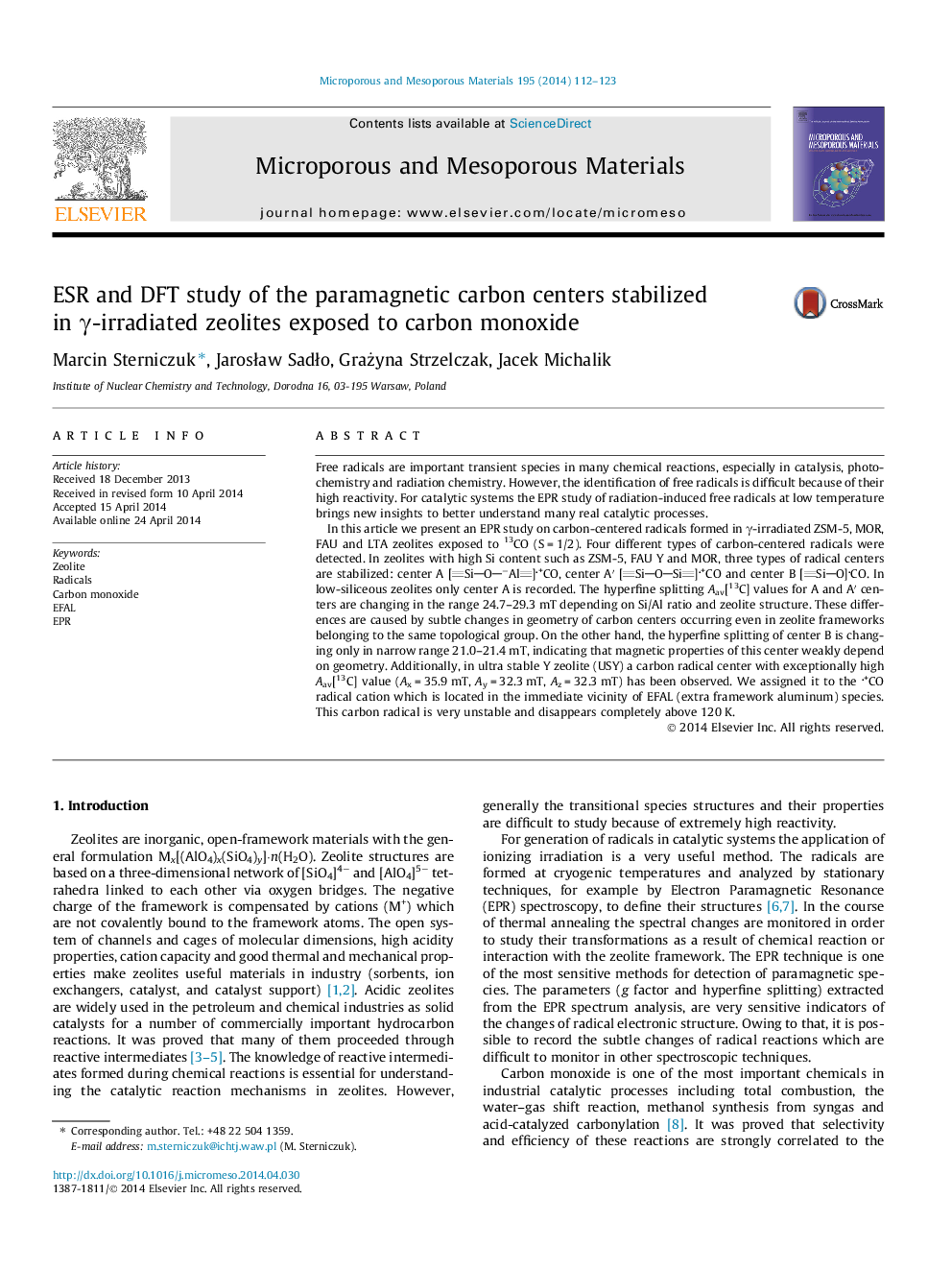| Article ID | Journal | Published Year | Pages | File Type |
|---|---|---|---|---|
| 73103 | Microporous and Mesoporous Materials | 2014 | 12 Pages |
•In zeolites exposed to CO and γ-irradiated +CO radical cations are stabilized.•The preferential positions of +CO radicals in silicaalumina frameworks were described.•We explain how the subtle changes of local zeolite geometry affect the magnetic properties of carbon radicals.•We show how presence of EFAL species influences carbon radical stability.
Free radicals are important transient species in many chemical reactions, especially in catalysis, photochemistry and radiation chemistry. However, the identification of free radicals is difficult because of their high reactivity. For catalytic systems the EPR study of radiation-induced free radicals at low temperature brings new insights to better understand many real catalytic processes.In this article we present an EPR study on carbon-centered radicals formed in γ-irradiated ZSM-5, MOR, FAU and LTA zeolites exposed to 13CO (S = 1/2). Four different types of carbon-centered radicals were detected. In zeolites with high Si content such as ZSM-5, FAU Y and MOR, three types of radical centers are stabilized: center A [SiO−Al]+CO, center A′ [SiOSi]+CO and center B [SiO]CO. In low-siliceous zeolites only center A is recorded. The hyperfine splitting Aav[13C] values for A and A′ centers are changing in the range 24.7–29.3 mT depending on Si/Al ratio and zeolite structure. These differences are caused by subtle changes in geometry of carbon centers occurring even in zeolite frameworks belonging to the same topological group. On the other hand, the hyperfine splitting of center B is changing only in narrow range 21.0–21.4 mT, indicating that magnetic properties of this center weakly depend on geometry. Additionally, in ultra stable Y zeolite (USY) a carbon radical center with exceptionally high Aav[13C] value (Ax = 35.9 mT, Ay = 32.3 mT, Az = 32.3 mT) has been observed. We assigned it to the +CO radical cation which is located in the immediate vicinity of EFAL (extra framework aluminum) species. This carbon radical is very unstable and disappears completely above 120 K.
Graphical abstractFigure optionsDownload full-size imageDownload as PowerPoint slide
